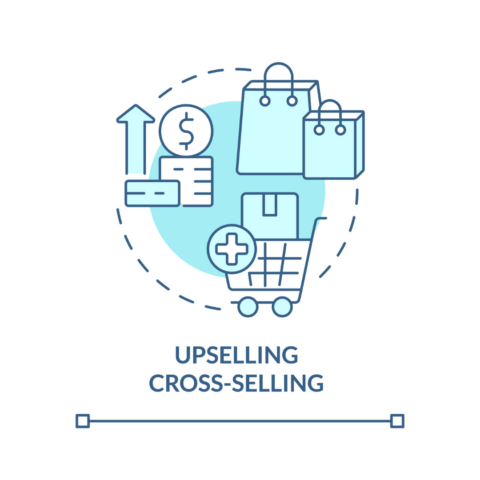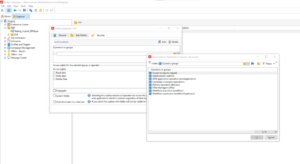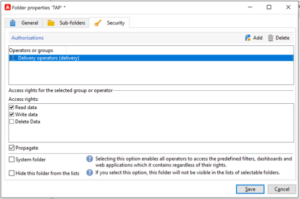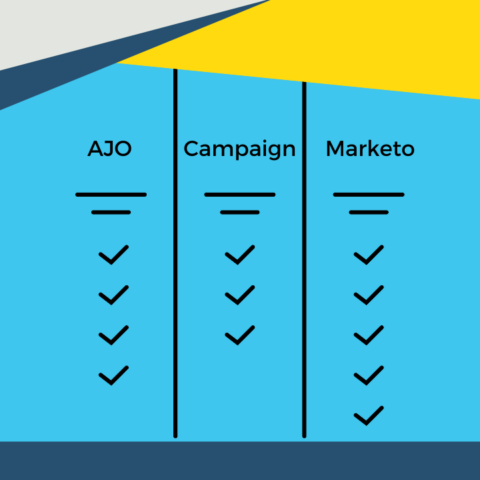
How to Assign User Access in Adobe Campaign
Adobe Campaign has a handy feature that most users know about but not enough use to the full potential.
Well, Adobe Campaign has a lot of features like that.
We’re looking specifically at the ability to assign permission and restrict access to folders.
Assigning permissions to folders and views enables you to organise, and retain control of, Campaign data.
Access is granted and restricted by assigning “operator groups” to folders and “views”.
Operator groups
You can think of operator groups as user groups. An operator is anyone who can log in to the Campaign instance and make changes.
You might create operator groups for:
- Product marketing teams
- Administrators
- Data analysts
- Senior managers
- Report access only
- Campaign managers
- Workflow execution
- Local market managers
Creating operator groups is essential for controlling permission. It’s also useful for notifying stakeholders without sending a blast or contacting colleagues manually. For example, if an error occurs, or if someone needs to sign off on a campaign.
To create and manage operator groups, go to Administration in the folder structure, then expand Access management and click Operator groups.
You can add the same user to multiple operator groups based on their needs and your organisation’s setup.
Views
A view in Adobe Campaign displays data that is physically stored in another folder of the same type.
Creating a view is helpful for finding information quickly. Views provide direct access to content collected from multiple folders, without needing to move or duplicate data.
Views don’t store data; instead, they surface data from multiple other folders. It’s similar to creating a shortcut in your PC folders, but smarter.
For example, you might create views for:
- Reports
- Delivery templates
- Workflows (called Programs in Adobe Campaign)
- Recipients
To turn a folder into a view, right-click the folder and select Properties, then in the Restrictions tab, check the box beside This folder is a view. Then you can populate the view by defining filter criteria in the query editor.
When you create views, remember that the folder must be empty. Any data stored in the folder when you convert it to a view will be deleted.
How to restrict access to folders and views in Adobe Campaign
Now that we’ve defined operator groups and views, it’s time to assign access.
The process for this is quite logical. But there are a couple of tricks that help you customise access, so keep reading to get bonus best practice data management tips.
- Right-click the folder and click Properties
- Navigate to the Security tab, where you can see active permissions
- Click Add to assign an operator group
- Click Delete to restrict access for an operator group

After adding an operator group, you can customise their permissions using the Read, Write and Delete data checkboxes. This extra level of control prevents accidental deletion, dilution, or dirtying of data.

Related: Time to upgrade your Adobe Campaign instance?
Bonus tips and tricks for assigning permission
- Propagation
Propagating access rights means the authorisations automatically apply to the subfolders in the structure. It’s a time-saving tip that avoids you having to manually apply permissions for every subfolder.
Keep in mind that unchecking Propagate doesn’t clear permissions from subfolders. Propagating is automatic; undoing the choice means manually clearing permissions one by one.
- System folders
Making a folder into a system folder grants access to all operators, regardless of their permission.
Wield this power wisely, as granting access to every user presents some obvious data security concerns.
However, unlike propagating, if you uncheck the System folder option (found in the Security tab), the reversal is automatic.
Why restrict access?
GDPR compliance
Compliance is the #1 reason to restrict folder and view access in Adobe Campaign.
Restricting access means a user’s data is only visible to a select group of people. As a result, there’s no risk of personal details crossing borders or ending up in the wrong recipient list.
Data consistency
Muddying up permissions can jeopardise data quality. If operator groups can only read, write and delete data relevant to their role, there’s less risk of double entry or pollution.
This is also why Views is a surprisingly powerful functionality.
Avoid confusion
If you work in a business with multiple similar deliveries, offers, campaigns or recipients, it’s easy to accidentally use the wrong data. For example, when building a communication workflow, a user may click the US recipients list for the wrong product.
But if the user can’t see that data, there’s no possibility they can accidentally send the wrong communication.
Need a hand with your Adobe Campaign implementation?
We help some of the world’s best-known brands define their requirements, implement a solution, and maximise their investment with Adobe Campaign training and tech support.
Contact TAP CXM to speak directly with an Adobe Campaign specialist.



